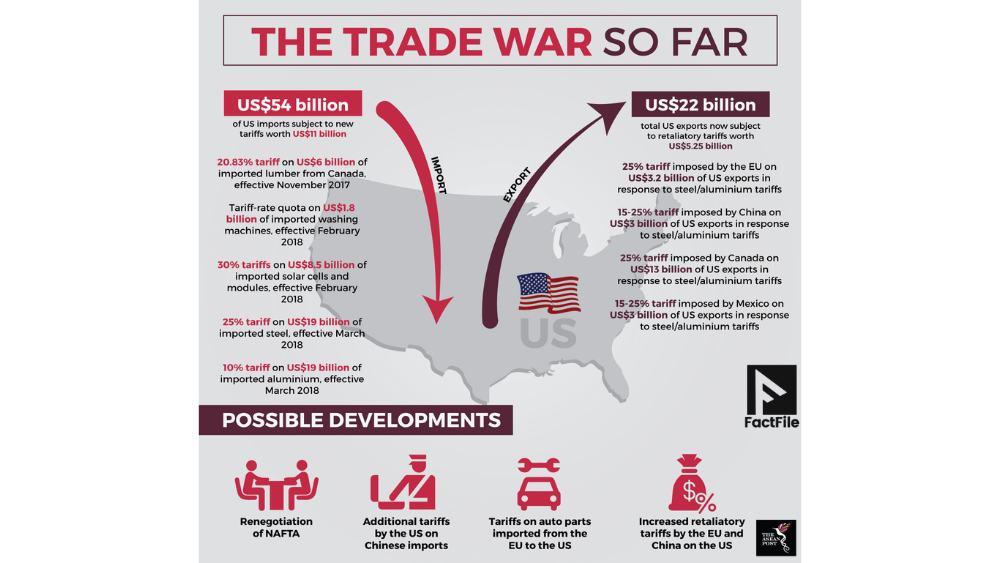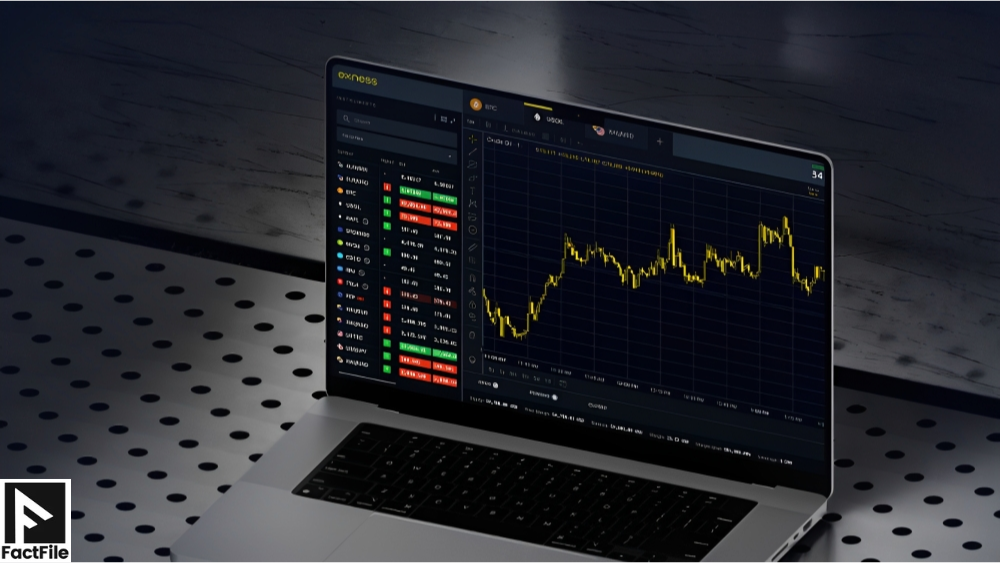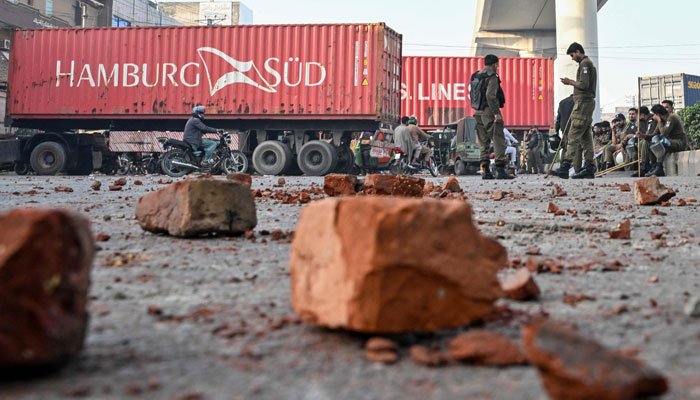The possibility of a trade war, once a looming threat, is now a stark reality. US tariffs have been enacted, sending ripples across global economies, with Asian markets finding themselves at the epicentre of the turbulence. For traders and investors, managing this volatile new reality requires three things: a keen understanding of the immediate impacts, a strategic approach to mitigating risks, and finally, uncovering potential, albeit unconventional, opportunities.
How Things Stand: A Quick Breakdown
Asian stock markets have reacted sharply to the escalation of US tariffs. Recent announcements, such as the doubling of tariffs on steel and aluminium, have caused markets like Hong Kong, Tokyo, Sydney, and Singapore to register significant declines.
The Shanghai Composite, Hong Kong’s Hang Seng, and Japan’s Nikkei 225 have all suffered steep losses, with the Hang Seng falling over 13% and the Nikkei down 7.8% on highly volatile days described as a “bloodbath.”
These declines reflect a broader trend of heightened volatility and investor anxiety. In May 2025, Asian factory activity shrank as US tariffs and softer demand in China weighed heavily on companies, painting a darkening outlook for a region once seen as a global growth engine.
The core issue is Asia’s heavy reliance on exports, especially to the US. Manufacturing hubs like Japan, South Korea, Vietnam, Cambodia, Thailand, and China now face stiff headwinds. Tariffs ranging from 10% to as high as 54% on goods like textiles and automobiles directly threaten their economies.
Even a temporary pause in the US-China trade war, which saw the US cut tariffs on Chinese imports from 145% to 30% and China reciprocate, brought brief relief and a rally in Asian markets—highlighting their extreme sensitivity to trade developments. However, the underlying tensions and the “permanent” nature of this new tariff era suggest any respite may be short-lived.
ALSO READ: British Pound Near Rs. 400 As PKR Struggles Against Market
Navigating the Storm: Strategies for Traders
In this environment, a reactive approach is not enough. Traders need to craft diversified strategies and understand the unique characteristics of alternative assets.

Diversify Through Indices and Value
One proven tactic is diversification via stock market indices, which can spread risk across multiple companies.
Key Asian indices to watch:
- NIFTY 50 (India): Tracks 50 top companies across 14 sectors.
- Nikkei 225 (Japan): Focused on Japan’s export-driven economy.
- Hang Seng (Hong Kong): Seen as a sentiment gauge for China.
- Straits Times (Singapore): Heavily weighted in finance and telecoms.
- KOSPI (South Korea): Sensitive to tariffs due to tech and auto exports.
- Shanghai Composite (China): Tracks mainland Chinese stocks directly impacted by tariffs.
These indices help average out risk but still need close monitoring. For example, the Shanghai Composite rose 0.21% to 3,387 in May 2025 after China cut lending rates to soften tariff impacts.
Bitcoin: An Unconventional Hedge
Some traders look to bitcoin as a decentralized hedge. However, its relationship with trade wars is mixed. Tariffs can trigger volatility in crypto markets too, with prices dropping alongside equities in a flight to safety. Mining costs may also rise due to tariffs on hardware. Still, bitcoin sometimes rebounds when traditional assets struggle.
Oil: A Supply and Demand Balancing Act
Oil markets face trade war risks too. US-China tensions have already lowered oil demand forecasts for 2025. The International Energy Agency expects the weakest demand growth in five years, pushing crude prices lower. An increase in US production could add to this downward pressure, but trade war tariffs may also slow drilling activity.
Market insights by Krisada Yoonaisil, Financial Markets Strategist at Exness.





